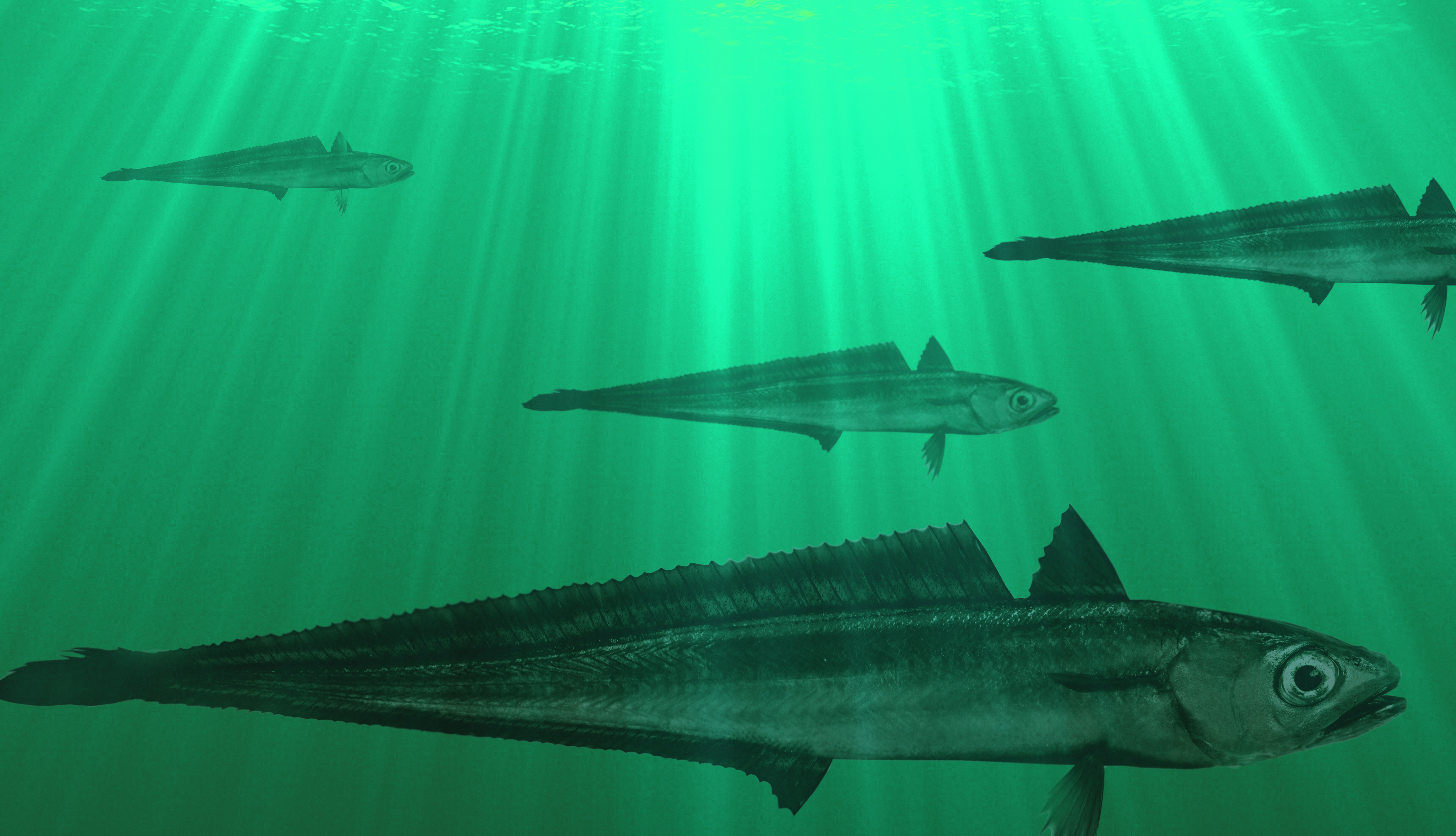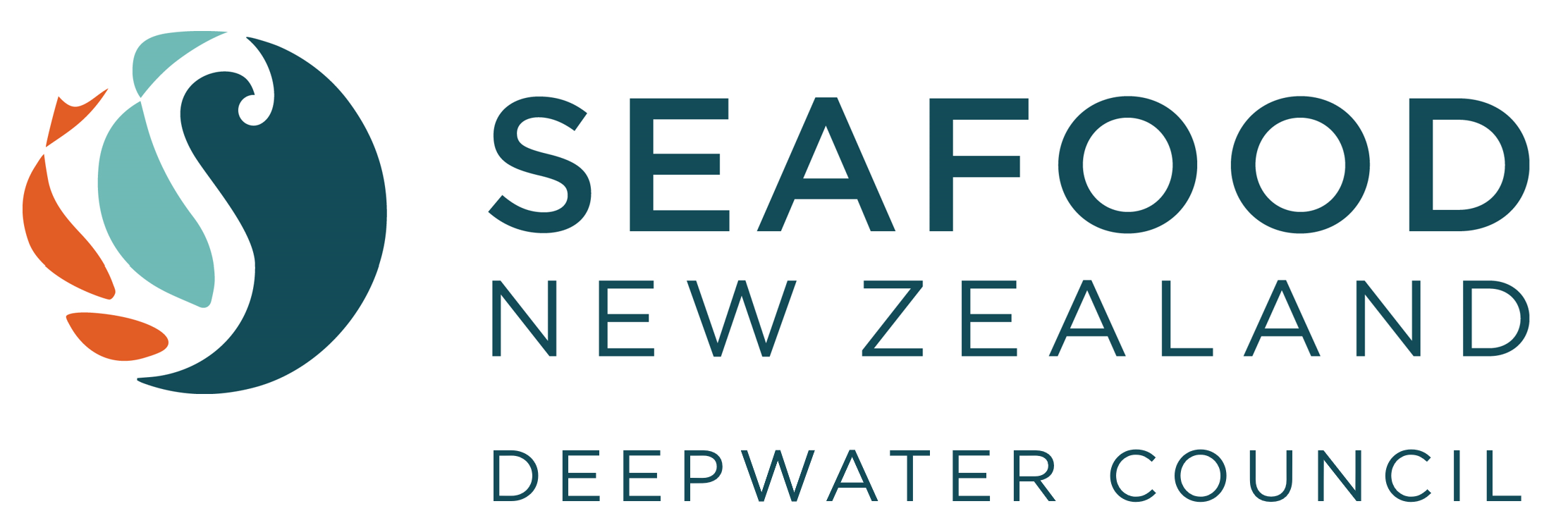
Hoki, Hake and Ling Trawl Fishery Surveillance Audit 2019
New Zealand Hoki, Hake and Ling Trawl Fishery Surveillance Audit 2019
The trawl fisheries for hake (HAK 1, HAK 4), hoki (HOK 1 East and West) and ling (LIN 3, LIN 4, LIN 5, LIN 6, LIN 7) are MSC certified and passed their annual audit in 2019.
DWG undertakes to make all non-confidential information that is provided to the Conformance Assessment Body publicly available on this webpage to ensure all documents are easily accessible by all participants.
A summary of the key information from these references can be found in the Situation Report.
Principle 1
"A fishery must be conducted in a manner that does not lead to over-fishing or depletion of the exploited populations and, for those populations that are depleted, the fishery must be conducted in a manner that demonstrably leads to their recovery."
The intent of this principle is to ensure that the productive capacities of the resources are maintained at high levels and are not sacrificed in favour of short term interests.
Ballara, S.L. & O’Driscoll, R.L. (2019). Catches, size, and age structure of the 2017–18 hoki fishery, and a summary of input data used for the 2019 stock assessment. New Zealand Fisheries Assessment Report 2019/48. 140 p.
Dunn, M.R. & Langley, A. (2018). A review of the hoki stock assessment in 2018. New Zealand Fisheries Assessment Report 2018/42. 55 p.
Dunn, M.R. (2019). Stock assessment of Sub-Antarctic hake (part of HAK 1) for 2018. New Zealand Fisheries Assessment Report 2019/52. 29 p.
Dunn, M.R & Ballara, S.L. (2019). Fishery description and stock assessment for ling off the West Coast South Island (LIN 7) to the 2015–16 fishing year. New Zealand Fisheries Assessment Report 2019/40. 112 p.
https://fs.fish.govt.nz/Doc/24755/FAR-2019-52-Sub-Antarctic-Hake-Stock-Assessment.pdf.ashx
Finucci, B. (2019). Descriptive analysis and a catch-per-unit-effort (CPUE) analysis of the West Coast South Island (HAK 7) fishery for hake (Merluccius australis). New Zealand Fisheries Assessment Report 2019/55. 49 p.
FNZ (2019). Fisheries Assessment Plenary May 2019: Stock Assessments and Stock Status, Vol. 2 Hake to Pilchard. (Hake pp.501-534; Hoki, pp.535-575; Ling pp.699-741).
FNZ (2019c). Review of Sustainability Measures for Hake (HAK 7) for 2019/20. Fisheries New Zealand Discussion Paper No: 2019:05. 10 p.
Holmes, S. (2019). Stock assessment of ling (Genypterus blacodes) on the Chatham Rise (LIN 3&4) for the 2017-18 fishing year. PowerPoint presentation to Deep Water Working Group. May 2019. DWWG2019-121.
Horn, P. L. (2017). Stock assessment of hake (Merluccius australis) on the Chatham Rise (HAK 4) and off the west coast of the South Island (HAK 7) for the 2016–17 fishing year. New Zealand Fisheries Assessment Report 2017/47. 70 p.
Horn, P.L., Dunn, M.R. & McKenzie, A. (2018). Stock assessments of hoki, hake and ling using alterative catch histories. New Zealand Fisheries Assessment Report 2018/14. 74 p.
Marsh, C., McKenzie, A., Francis, R.I.C.C. & Doonan, I. (2018). Evaluating the effects of changes in the frequency of research trawl surveys and age sampling on the hoki, hake, and ling stock assessments. New Zealand Fisheries Assessment Report 2018/43. 60 p.
Masi, M. (2019). Stock assessment of ling (Genypterus blacodes) in the Sub-Antarctic (LIN 5&6) for the 2017–18 fishing year. New Zealand Fisheries Assessment Report 2019/30: 31 p.
McGregor, V., Dunn, M. & Kienzle, M. (2019). 2019 hake stock assessment in West Coast of the South Island (HAK 7). Project HAK2018-01. Presentation to Deep Water Working Group, 09/05/19.
McKenzie, A. (2019). Assessment of hoki (Macruronus novaezelandiae) in 2018. New Zealand Fisheries Assessment Report 2019/22. 67 p.
MPI (2008). Harvest Strategy Standard for New Zealand Fisheries. Ministry for Primary Industries. 25 p.
O’Driscoll, R. L. & Ballara, S. L. (2018). Trawl survey of middle depth fish abundance on the west coast South Island, August 2016 (TAN1609). New Zealand Fisheries Assessment Report 2018/47. 74 p.
O’Driscoll, R. L., Ballara, S.L., MacGibbon, D.J. & Schimel, A.C.G. (2018). Trawl survey of hoki and middle-depth species in the Southland and Sub-Antarctic areas, November–December 2016 (TAN1614). New Zealand Fisheries Assessment Report 2018/39. 84 p.
O’Driscoll, R. L. & Escobar-Flores, P. (2018). Acoustic survey of spawning hoki in Cook Strait during winter 2017. New Zealand Fisheries Assessment Report 2018/12. 39 p.
Stevens, D. W., O’Driscoll, R. L., Ballara, S. L. & Schimel A.C.G (2018). Trawl survey of hoki and middle-depth species on the Chatham Rise, January 2018 (TAN1801). New Zealand Fisheries Assessment Report 2018/41. 111 p.
Principle 2
"Fishing operations should allow for the maintenance of the structure, productivity, function and diversity of the ecosystem (including habitat and associated dependent and ecologically related species) on which the fishery depends."
The intent of this principle is to encourage management of fisheries from an ecosystem perspective under a system designed to restrain the impacts of the fishery on the ecosystem.
Baird, S.J.; Wood, B.A. (2018). Extent of bottom contact by New Zealand commercial trawl fishing for deepwater Tier 1 and Tier 2 target fish stocks, 1989–90 to 2015–16.
Baker, G. B., Jensz, K., Cunningham, R., Holdsworth, M. & Chilvers, B. L. (2015). White-capped albatross aerial survey 2015. Report prepared by Latitude 42 Environmental Consultants Pty Ltd for the New Zealand Department of Conservation, Wellington. 31p.
Baker, B., Jensz, K. (2019). 2018 aerial survey of Salvin's albatross at the Bounty Islands. Final report to the Conservation Services Programme, Department of Conservation. Latitude 42, Australia. 11 p.
Baker, C.S., Boren, L., Childerhouse, S., Constantine, R., van Helden, A., Lundquist, D., Rayment W., Rolfe,J.R. (2019). Conservation status of New Zealand marine mammals, 2019. New Zealand Threat Classification Series 29. 18 p.
DOC (2017). New Zealand sea lion/rāpoka Threat Management Plan 2017 – 2022. 17 p.
DOC (2019). Conservation Services Programme Annual Plan 2019/20. Department of Conservation, Wellington. 88 p.
DOC (2019a). Conservation Services Programme Annual Research Summary 2017-18. Department of Conservation, Wellington. 93 p.
DWG (2019e). Environmental Liaison Officer’s report – Environmental Training and Liaison for Deepwater Fishing Crew: 2017-18 Report. 5 p.
Dragonfly (2019). Protected species bycatch 2002-03 to 2017-18.
Ford, R. B., W. N. S. Arlidge, D. A. Bowden, M. R. Clark, M. Cryer, A. Dunn, J. E. Hewitt, J. R. Leathwick, M. E. Livingston, C. R. Pitcher, A. A. Rowden, S. F. Thrush, G. A. Tingley and I. D. Tuck (2016). Assessing the effects of mobile bottom fishing methods on benthic fauna and habitats. New Zealand Fisheries Science Review 2016/2.
Francis, M. (2017). Review of commercial fishery interactions and population information for New Zealand basking shark. Prepared for Department of Conservation. 44 p.
Fu, D. & Sagar, P. (2016). The 2014 demographic assessment of the Snares Islands population of Southern Buller’s albatross (Diomedea bulleri bulleri). New Zealand Aquatic Environment and Biodiversity Report No. 165. 40 p.
Richard, Y., Abraham, E.R. & Berkenbusch, K. (2017). Assessment of the risk of commercial fisheries to New Zealand seabirds, 2006–07 to 2014–15. New Zealand Aquatic Environment and Biodiversity Report 191.
Robertson, H. A.; Dowding, J. E.; Elliott, G. P.; Hitchmough, R. A.; Miskelly, C. M.; O’Donnell, C. F. J.; Powlesland, R. G.; Sagar, P. M.; Scofield, R. P.; Taylor, G. A. (2013). Conservation status of New Zealand birds, 2012. NZ Threat Classification Series 4. Department of Conservation. Wellington.
Sagar, P., Thompson, D. & Scofield, P. (2017). Population study of Southern Buller’s Albatross on The Snares. Report prepared for Deepwater Group Ltd. 13 p.
Sagar, P., Charteris, M., Parker, G., Rexer-Huber, K. & Thompson, D. (2018). Salvin's albatross: Bounty Islands population project. Final report to the Conservation Services Programme, Department of Conservation, prepared by NIWA. 18 p.
Tingley, G.A. (2017). Managing the impacts of fishing on benthic habitat in New Zealand. Report prepared for Deepwater Group. 3 p.
Waugh, S.M.; Bartle J.A. 2013. Westland petrel. In: Miskelly, C.M. (ed.) New Zealand Birds Online.
Waugh, S.M.; Barbraud, C.; Adams, L.; Freeman, A.N.D.; Wilson, K.-J.; Wood, g.; Landers, T.J.; Baker, G.B. 2015. Modelling the demography and population dynamics of a subtropical seabird, and the influence of environmental factors. Condor 117: 147–164.
Principle 3
"The fishery is subject to an effective management system that respects local, national and international laws and standards and incorporates institutional and operational frameworks that require use of the resource to be responsible and sustainable."
The intent of this principle is to ensure that there is an institutional and operational framework for implementing Principles 1 and 2, appropriate to the size and scare of the fishery.
DWG. (2019). Hoki Operational Procedures Version 18.0. 17 p. https://deepwatergroup.org/wp-content/uploads/2019/10/Hoki-OP-V18.pdf
DWG (2019a). Deepwater Trawl Seabirds Operational Procedures. Version 6.0. 25 p.
DWG (2019b). Deepwater Trawl Marine Mammals Operational Procedures. Version 9.0. 23 p.
DWG (2019c). Deepwater Trawl Reporting Operational Procedures. Version 3.0. 10 p.
DWG (2019d). Deepwater Trawl Vessel Management Plan (VMP) Vessel Specific Procedures for Mitigating Seabird and Mammal Captures for Trawlers.
DWG (2019e). Environmental Liaison Officer’s report – Environmental Training and Liaison for Deepwater Fishing Crew: 2017-18 Report. 5 p.
DWG (2019f). Environmental Risks and Operational Procedures. DW Operators Meeting – Nelson 5 March 2019. PowerPoint presentation prepared by Deepwater Group Ltd.
FNZ (2018). Annual Operational Plan for Deepwater Fisheries 2018/19. Fisheries New Zealand Technical Paper No: 2018/07. 42 p.
FNZ (2019). Aquatic Environment and Biodiversity Annual Review 2018. Compiled by the Fisheries Science Team, Ministry for Primary Industries, Wellington New Zealand. 704 p.
FNZ (2019a). Annual Review Report for Deepwater Fisheries 2017/18. Fisheries New Zealand Information Paper No: 2019/01. 112 p. https://www.fisheries.govt.nz/dmsdocument/33340/send
FNZ (2019b). National Fisheries Plan for Deepwater and Middle-depth Fisheries 2019. Fisheries New Zealand Technical Paper No: 2019/03. 32 p.
FNZ (2019c). Annual Operational Plan for Deepwater Fisheries 2019/20. Fisheries New Zealand Technical Paper No: 2019/05. 41 p.
Helson, J., Leslie, S., Clement, G., Wells, R. and Wood, R. (2010). Private rights, public benefits: Industry-driven seabed protection. Marine Policy 34, 557–566.
Ministry of Fisheries (2009). Fisheries 2030: New Zealanders maximising the benefits from the use of fisheries within environmental limits. Author: Wellington.
Ministry of Fisheries (2011). Research and Science Information Standard for New Zealand Fisheries. Ministry of Fisheries, April 2011. 31 p.
MPI (2008). Harvest Strategy Standard for New Zealand Fisheries. Ministry for Primary Industries. 30 p.
MPI (2010). Memorandum of Understanding: Continuing a partnership between the Ministry of Fisheries and the deepwater fishing industry for the management of New Zealand’s deepwater fisheries. 12 p.
MPI (2010a). Hoki: National Deepwater Fisheries Plan. 51 p.
MPI (2011). Ling: National Deepwater Fisheries Plan. 50 p.
MPI (2013). Hake: National Deepwater Fisheries Plan. 29 p.
MPI (2013a). National Plan of Action to reduce the incidental catch of seabirds in New Zealand fisheries. 63 p.
MPI (2017). Medium Term Research Plan for Deepwater Fisheries 2018/19 – 2022/23. MPI Information Paper No: 2017/11. 21 p.
MPI (2019). Fisheries Compliance: DW Operators Meeting – Nelson 5 March 2019. PowerPoint presentation prepared by Ministry for Primary Industries.
Surveillance Report
The final surveillance report can be accessed here.

